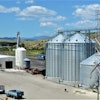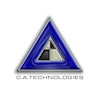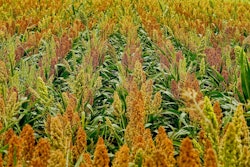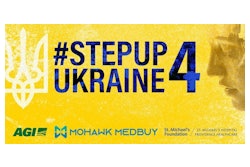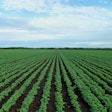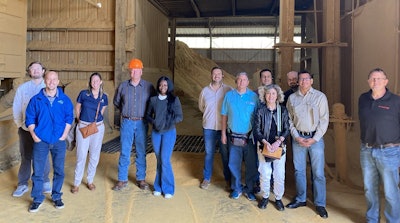
TheU.S. Grains Council(USGC) has continued its push to make distiller’sdried grains with solubles (DDGS)a viable option in feed markets around the world, particularly those struggling to find affordable sources of nutrition for their livestock. To meet this goal, the USGC has conducted trade missions and programs over the past several months for foreign stakeholders to see the dependable value and protein content DDGS can have for their operations.
Latin America DDGS awareness campaign
In May, USGC staff traveled with a group of nutritionists from Mexico and the Latin America region on a trip built to increase their awareness of DDGS and the new technologies used in the ethanol industry to create value-added co-products, culminating in participation at theDistillers Grains Symposiumin Omaha, NE.
Led by Ana Ballesteros, USGC marketing director in Latin America, and Patricia Esqueda, USGC marketing specialist in Mexico, the group included nutritionists from Colombia, Ecuador and Mexico working in aquaculture and a variety of livestock species.
Throughout the symposium, attendees heard from industry experts on DDGS production in the United States, including deep dives into grain and co-product updates, sustainability and nutrition for feed products.
“The participants particularly enjoyed the nutrition-oriented sessions during the symposium and considered most of the information they heard to be relevant to improving their understanding of the industry and its products,” Ballesteros said.
On-site dry milling facilities enhance DDGS
Outside the symposium, the group visited the ethanol facilities of two USGC members:Chief Ethanol Fuels, Inc., andGreen Plains, Inc. At each plant, participants learned more about their on-site dry milling facilities and the new technologies used to update and enhance DDGS to meet the needs of specific species. The group left the plants and symposium interested in exploring how to use these new products in their formulations — the program’s goal.
“The participants in this group had not had opportunities to visit an ethanol plant before, so it was very interesting for them to have a better understanding of how regular DDGS and new technology DDGS are produced,” Esqueda said.
“For the members of this group, it was very important to understand the processes and to know there is good quality control that allows the consistency of the product to be maintained, making it safe for shrimp and other aquaculture diets, as well as for other species.”
Aquaculture fuels Mexico’s DDGS demand
Mexico is the seventh-largest market for shrimp production in the world. The country represented more than 18 percent of all U.S. DDGS exports in 2020/2021, at 2.1 million metric tons.
Additionally, since marketing year (MY) 2015/2016, DDGS exports to Latin America have grown continuously, from 468 thousand metric tons (TMT) to 690 TMT in MY 2020/2021. Colombia is the largest export partner in the region with a 40 percent share of total exports, while exports to Ecuador grew almost 10 times in this same period, from 5.6 TMT to 52.5 TMT.
Aquaculture has quickly become an important agricultural sector in Mexico and other markets around the world. Asian aquaculture farms have grown rapidly in recent years as a solution to increasing food demand and the need for sustainable fishing practices. In turn, the USGC has committed to holding programs in Asia to increase DDGS inclusion rates on feed lots and aquaculture farms in the area.
Low-cost feed formulation training
全面的培训主题includin覆盖g formulation techniques for using the existing database of price and raw materials; formulation by production appearance; cattle nutritional needs; and feed ingredient quality, including its effect on the formula.
“The participants enjoyed the training session as it helped enhance their knowledge of modern feed formulation and the importance of quality feed when overall feed costs play a huge role in their business operations today,” said Chuin Shern Lee, USGC SEA&O regional marketing manager.
Participants were asked to practice using formulation software during the program. The model showed DDGS could still be included in the ration up to three percent at levels up to $550 per metric ton. Following the training, each participant was able to formulate their ration with the software provided by Dr. Budi Tangendjaja, USGC regional technical consultant for SEA&O.
Tangendjaja also organized a feed formulation contest for participants. The attendee who came up with the least-cost feed formula was the winner. Using current DDGS prices, the winning formula showed a reduction in overall feed costs by $4.62 per ton with a 5.66 percent DDGS inclusion rate versus zero DDGS inclusion. The creative component of the training motivated participants to see the economic value and benefits of DDGS for themselves.
Through programming like this, the USGC hopes to put the power of dynamic feed formulation in the hands of the producer and improve meat production efficiency by increasing the use of DDGS.
DDGS in cattle feed
USGC’s team in Southeast Asia and Oceania (SEA&O) recently partnered with a local distributor to demonstrate the benefits it offers in beef cattle feed rations.
Beef consumption in Indonesia has been growing, but the lack of calf supplies has threatened to interrupt the growth. The USGC believes it is important for the cattle farmers to learn and understand the dynamics of feed nutrition to achieve better meat production, fill the supply and demand gap and improve profit margins.
Türkiye’s growing agricultural market
USGC staff in the Europe, Middle East and Africa (EMEA) region also spent time in Türkiye, a market with sizeable room for growth due to its emerging aquaculture industry, to continue promoting DDGS to agricultural stakeholders this month.
In both Izmir and Bolu, USGC EMEA Regional Director Ramy H. Taieb set the stage by welcoming attendees to the program and introducing the day’s agenda.
“This program is a continuation of all the efforts we have been putting into the poultry and dairy sectors in Türkiye,” Taieb said. “After conducting two highly successful trials with DDGS in layer and broiler diets, it’s time to ensure adoption in the Turkish industry.”
Reece Cannady, USGC assistant regional director for the Middle East and Europe, provided a DDGS production, supply and demand overview before the program took a deeper look at DDGS use in the feed of layers and broilers with Dr. Ali Çalik, associate professor atAnkara University, and dairy and beef cattle with Dr. Alvaro Garcia, a consultant atDellait Consulting.
“With the current shortage of feedstocks in the Turkish market, it’s a great time for feed millers to be evaluating a product that importers are already familiar with, and that’s DDGS,” Cannady said.
Participants also had the opportunity to learn more from Garcia on feed milling techniques with DDGS and sorghum during programming there.
Türkiye is the ninth-largest importer of U.S. DDGS, purchasing just over 303 thousand metric tons so far in the 2021/2022 marketing year. The USGC continues to look for opportunities to open the market for and build relationships with buyers and end-users of U.S. in the country.
“Türkiye is a very reliable market for U.S. DDGS and is a longstanding partner, despite low inclusion rates in poultry rations,” Taieb said. “So, the potential for growth in DDGS adoption and exports is still very much present in the Turkish market.”
USGC Türkiye training center partnership
The USGC andAydin Adnan Menderes University’s Faculty of Agriculture signed a memorandum of understanding (MOU) that will open a new aquaculture training center in the country.
“This partnership will be essential to beginning our aquaculture engagement in the Turkish market,” said Cannady. “The faculty at Aydin Adnan Menderes is at the forefront of aquaculture research in Türkiye, as well as having longstanding experience using DDGS in fish feeds.”
The USGC, with funds from theNorth Dakota Corn Utilization Council, will donate equipment to be used in a feeding trial conducted at the center investigating DDGS in rainbow trout rations. In addition to the trial, the USGC will bring in Turkish industry representatives to provide education on effectively milling DDGS into pelleted fish feeds.
The feeding trial will continue throughout 2022 and will be followed by a presentation of the results to the Turkish industry. The center will remain open for the next five years as the USGC plans to use the equipment to conduct other feeding trials and training sessions.
“Using new ingredients in fish feeds can be a fairly complex process,” Cannady said. “You have to consider water salinity and floating versus sinking feeds, among many other variables. Bringing in teams to gain hands-on experience will be essential to the widespread adoption of DDGS in aquafeeds.”
The rainbow trout market has seen substantial growth – up 30 percent annually over the last two years. Rainbow trout is viewed as a less expensive alternative to natural catch salmon, and the use of DDGS in the feed can provide a low-cost, high-quality feed alternative for the growing sector.
With the supply chain challenges facing producers everywhere, the USGC’s work becomes even more vital by providing avenues for U.S. agricultural goods to be an affordable, high-quality option for foreign buyers.
Consistently conducting programs for partners up and down the value chain works to build bridges between domestic farmers, export agencies, and end-users around the world that develop markets, enable trade, and improve lives.

